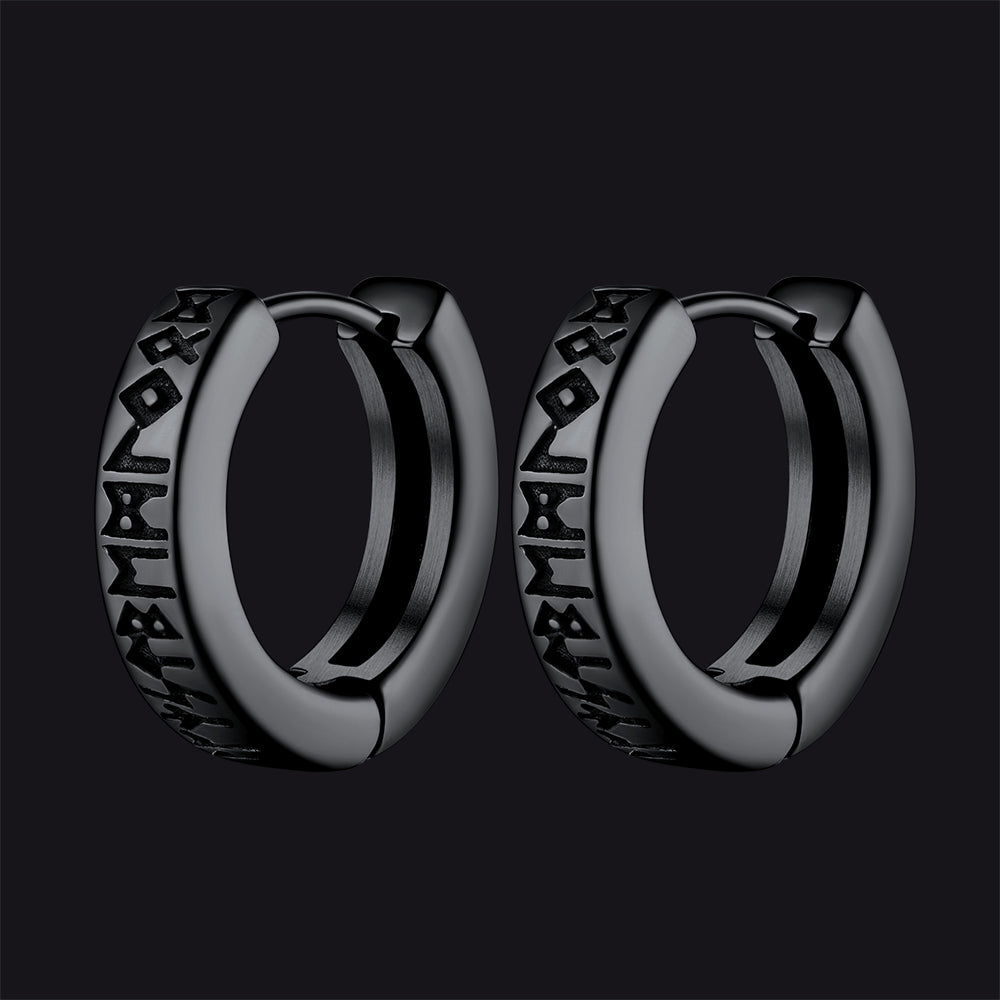Transforming History: How Weapons Turned Into Stylish Viking Jewelry
Vikings are often known as fierce fighters who carried swords, axes, and shields into battle. But their culture was more than fighting. They also valued skilled work and creative design. The weapons they used in battle later inspired jewelry. People wore these pieces not just to look good, but also for protection. Over time, Viking jewelry turned tools of war into stylish symbols. Today, these designs still inspire modern accessories.
The Dual Role of Viking Weapons
Weapons were very important to the Vikings. They used them in combat and as symbols of identity and honor. They were personal items that had been passed down through families.
A Viking's axe or sword was more than just a tool. Swords were expensive and often decorated, while Viking axes were used for different things, from massive battle tools to compact hand axes. Each type of axe had deep symbolic ties. These weapons represented bravery, loyalty and family pride. They carried the same prestige, or respect, from the battlefield to the jewellery.
How Weapons Turned Into Viking Jewelry
As warfare gave way to daily life, Vikings found ways to carry the spirit of their weapons in smaller, symbolic forms. Jewellery was the perfect answer.
Miniature Weapons in Ornament Form
Skilled workers made copies of swords, axes and shields to wear as necklaces or bracelets. A sword pendant or axe pendant was a way to hold on to the protective force of these weapons without needing to wear heavy steel. Though they were smaller, these ornaments were just as important. They were used as personal talismans for courage and protection.
Jewelry Beyond Decoration
The jewellery inspired by weapons was beautiful, but it was more than just a fashion statement. It had spiritual power. In the past, people wore pendants in the shape of Thor's Hammer or a small axe. They believed that these would protect them from danger and make the gods like them. It was both a decoration and a shield.
Materials and Craftsmanship in Viking Jewelry
Turning weapons into jewelry needed skill and careful work. Viking metalsmiths took pride in what they made and used materials that were easy to get or showed wealth.
Most Viking jewelry was bronze or silver. Gold was used only by the rich. Iron, which made many weapons, was less common because it could rust. Still, jewelry could copy the shape of iron blades in small, meaningful ways.
Designs often had knots, animals, or runes. These were not just decoration. They came from Norse myths and connected the jewelry to gods, nature, and protection.
Every piece had both strength and beauty. A Viking axe pendant, for example, often had careful engravings. These made it look good and kept its symbolic value.

Types of Weapon-Inspired Viking Jewelry
Weapon-themed jewelry became highly popular, and certain designs stood out across Viking societies.
Thor's Hammer (Mjölnir)
Perhaps the most well-known Viking symbol is Thor's Hammer. It was more than just a weapon, but a sacred tool connected to the god Thor's protection. Many men and women wore Mjölnir pendants. This made them one of the most common Viking ornaments.
Axe Pendants
Axes were the most common Viking weapon. They were practical for fighting and for daily use. Their shape also made them popular as jewellery. An axe pendant and earrings wasn't just stylish; it was a symbol of defence, endurance and strength. Many warriors carried them to feel brave, both in battle and in everyday life.
Sword Pendants
Swords were closely tied to honor and nobility because they were expensive to make. A sword pendant was a symbol of bravery and readiness for challenges. Even people who couldn't afford real swords could wear miniatures to show their warrior spirit.
Shield Symbols
The shield was a symbol of unity and survival. It was often used to defend the community as well as the individual. Shield shapes were used on pendants and rings to show people's loyalty to their clan and to remind them of the strength they shared.
Why Viking Warriors Wore Jewelry Outside the Battlefield
Viking jewelry carried personal and practical functions beyond decoration.
- Many warriors wore pendants shaped like weapons for protection in daily risks. While going to sea or traveling on trade routes, jewelry acted as a portable reminder of strength and luck.
- Family heritage played another role—jewelry was often passed down across generations, connecting wearers to ancestors who once fought with real versions of those weapons.
- Jewelry was also currency. Vikings traveled widely across Europe and needed portable wealth. Silver arm rings and weapon-themed pendants could be melted or traded when needed.
This practicality ensured weapon jewelry had both a material and symbolic value.
From Viking Age to Modern Fashion
Viking jewellery with weapon designs has become popular in fashion today. People don't carry real battle axes anymore, but wearing a Viking axe pendant or sword pendant can show strength and connect to heritage in a stylish way.
Many modern designers are inspired by Viking axes and Thor's hammer (Mjölnir). They use strong materials like stainless steel to make jewellery that will last. People wear these pieces not just for their history, but also as a fashion statement.
For men, wearing a pendant that looks like a weapon shows that they are strong and confident. For women, the hammer or axe designs often stand for independence and strength.
Viking jewellery is now a popular part of global fashion. The collections now include both simple silver designs and bold, rugged pieces.
4 FAQs on Viking Weapon-Inspired Jewelry
Q1: Which piece of Viking jewellery inspired by weapons was the most popular?
A: The most common symbol was Thor's Hammer (Mjölnir), which was seen as a symbol of divine protection.
Q2: Were Viking weapon jewellery styles just for men?
A: No, both men and women wore pendants for strength, faith, and status. Many female burials from the Viking Age include Mjölnir pendants or amulets.
Q3: What materials did Viking artisans use to make jewellery?
A: Silver and bronze were the most common metals, while gold was used by the wealthy. Engravings and runic carvings made them more meaningful.
Q4: Why is Viking weapon jewelry still popular today?
A: It combines traditional values like strength, resilience and courage with modern fashion. Wearing a Viking axe or sword pendant is a stylish way to keep this heritage alive.




